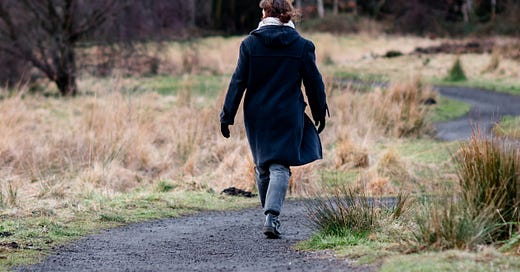For most of my life, I lived in survival mode without knowing what it was or what to call it. Maybe you know the feeling—that constant state of being on edge, waiting for something to go wrong, even when everything seems fine. That racing heart, those spinning thoughts, the endless replay of "what ifs", worst-case scenarios and catastrophising.
I thought this was just who I was. An anxious person. A worrier. A control freak. Someone who had to stay vigilant because letting my guard down felt dangerous.
The Science Behind Survival Mode
What I didn't realise was that my experience wasn't just anxiety—it was my brain's response to trauma. Trauma, whether from a single intense event or prolonged exposure to challenging situations, fundamentally changes how our brains process and store memories.
“Trauma” is the buzzword - so let me give you Gabor Mate's view on this:
“Trauma is a Greek word for wound. - trauma is not the event that inflicted the wound. So, the trauma is not the war. Trauma is not the abandonment. The trauma is not the inability of your parents to see you for who you were. Trauma is the wound that you sustained as a result. - Trauma is when you are actually wounded and as a result, you're constricted and limited and constrained by what happened.”
At the centre of this survival response are two key players in your brain:
The Amygdala: This small, almond-shaped structure serves as your brain's emergency response system. Its primary job is processing emotions, particularly fear, and detecting threats. When triggered, it rapidly activates your entire brain and body, putting you on high alert.
The Hippocampus: This crucial structure helps organise your memories into a coherent narrative. However, during traumatic experiences, stress hormones like cortisol can interfere with its normal functioning, causing memories to be stored in fragments rather than as a smooth, continuous story.
When Protection Becomes Prison
For me, everything became a potential threat. An awkward conversation. Running late to an appointment. A stranger's unexpected glance. My brain processed these everyday moments as emergencies.
What I now understand is that traumatic memories are different from ordinary ones. They're imprinted onto our brain circuitry with intense emotions, creating stronger and longer-lasting impressions. The amygdala doesn't just help store these memories—it tags them with emotional significance, putting them on high priority for future recall.
This is why I couldn't just "calm down" or "stop worrying." My brain had created a powerful memory system designed to protect me, but it had become overprotective to the point of imprisonment.
The Physical Impact
The constant state of alertness took its toll:
Persistent headaches
Tightness in my chest
Exhaustion that never lifted
Fragmented memories and difficulty concentrating
My body was perpetually primed for danger, with stress hormones flooding my system even in moments of peace.
The result was autoimmune disease. Uveitis, Sarcoidosis and eventually Graves disease.
The Path to Recovery
The breakthrough came when I understood that this wasn't a personal failure—it was my brain doing exactly what it was designed to do. The amygdala's hypervigilance, the hippocampus's struggle to process memories normally, the constant flood of stress hormones—all of these were protective mechanisms that had simply become stuck in overdrive.
But here's the hopeful part: our brains can change. You can teach an overactive amygdala to calm down. You can help your hippocampus process and integrate memories in a healthier way.
My journey to recovery started with small steps:
IEMT (Integral Eye Movement Therapy)
Simple breathing exercises to regulate my nervous system
Gentle movement practices to release stored tension
Mindfulness techniques to ground myself in the present moment
Working with professionals who understood trauma's impact on the brain
Connection to nature
Connection to others
Living, Not Just Surviving
The change wasn't immediate, but it was transformative. Gradually, I noticed:
The tightness in my chest began to ease
My thoughts slowed down
I could sit quietly without feeling the urgent need to scan for danger
Memories became less intrusive, overwhelming and emotional
For the first time in years, I wasn't just surviving—I was living.
Your Brain Can Heal
If you recognise yourself in this story, please know: You're not broken. Your brain has been doing its job—perhaps too well. Those fragmented memories, the hypervigilance, the constant state of alert—these are all normal responses to abnormal amounts of stress or trauma.
Imagine what it could feel like to:
Wake up feeling genuinely rested
Move through your day without carrying the weight of constant tension
Trust your body's signals again
Form new memories without the shadow of past trauma
Trust others and life in general
This transformation is possible. If I could learn to help my brain feel safe again, so can you.
Your survival mode doesn't have to be permanent. It's never too late to begin the journey from surviving to thriving.
I use different tools in my 1:1 sessions and programmes to support you towards your own transformation. If you would like to know more then check out the video below or sign up to the website.




